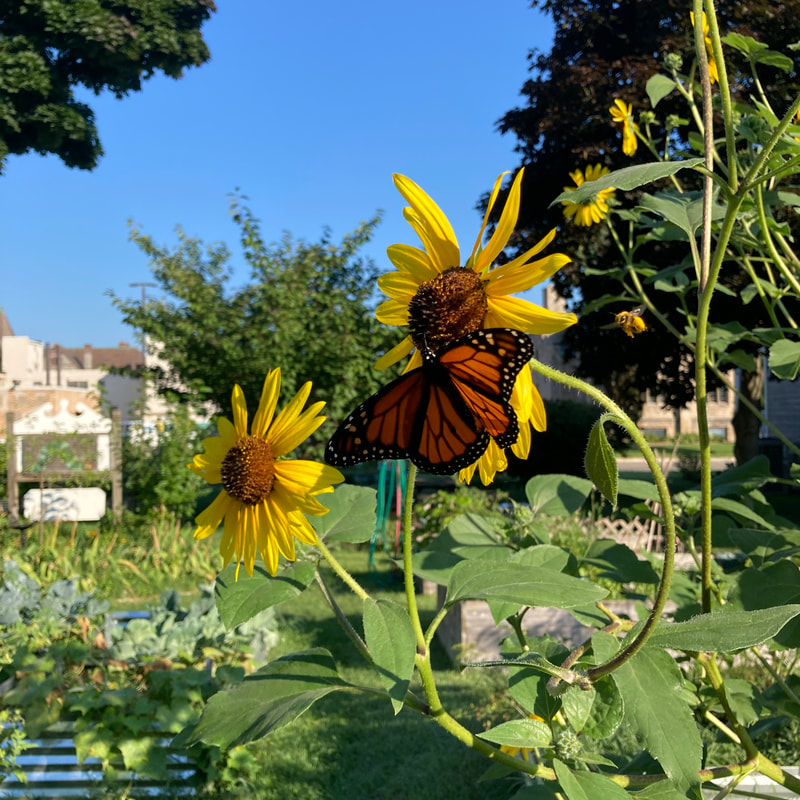|
Photo and article by Donna Iverson Three seed catalogs arrived in December, and one of them offered a seed packet labeled “honey bee garden.” I purchased the “honey bee garden” seed packet, aiming to grow some new flowers for the bees, come next summer This past summer, my community garden bed was divided in half ..half for the bees and half for me.The half for me was planted with salad greens, like lettuce, chives, arugula, and radishes. In the other half, I grew sunflowers and calendula, flowers attractive to pollinators. Both me and the bees ate well with daily foraging. When the seed packet arrived, I looked at the list of flowering seeds inside, and decided to do a little research on them. The list was long including aster, coneflower, hyssop, cosmos, poppies, clover, and forget-me-nots. Googling “bees,” a YouTube link appeared featuring a TED talk by Nicholas Dorian. The talk was entitled, “We’re saving the wrong bees.”Native bees are under threat due to a loss of habitat and use of insecticides, while honey bees are doing just fine,” he says. Dorian’s notes that honey bees are domesticated, live in hive colonies, and are raised by humans. Native bees are one their own, wild, solitary, and endangered. After listening to Dorian’s TED talk, I decided to plant food for native bees. Bees with names like leaf-cutter, carpenter bees, squash bees, sweat bees, miner bees and the ubiquitous bumble bee. So what plants do native bees prefer? Turns out, they are often specialized and not generalists like the honey bees. For example, the squash bee is attracted to squash blossoms. Doing a little more research, I found that all bees prefer plants native to their environment. Luckily, the seed packet contained mostly native plants. Bees also prefer simple flowers, not complex structures, and prefer flower colors of blue, purple, white and yellow. Besides planting native flowers, what else can gardeners do to attract native bees? Among the most important are leaving leaves over winter, and perhaps a dead log to provide habitat. Discontinue the use of pesticides and leave a little open ground for them to dig nests for their young. Bees are important to our own survival. The vast majority of plants we need for food rely on pollination, especially by bees,” according to Friends of the Earth. Bees pollinate 35% of our food, while 75% of plant species require an insect to pollinate them. The Honey Bee Garden seed packet is available at https://www.seedsavers.org where you can request a free garden catalog.
1 Comment
Marsha Reeves
1/12/2023 07:34:30 am
Thanks for writing this, Donna. Lots of us are doing what we can to support the health of our natural world, and this will help us up our game.
Reply
Your comment will be posted after it is approved.
Leave a Reply. |
Archives
April 2024
Categories |

 RSS Feed
RSS Feed